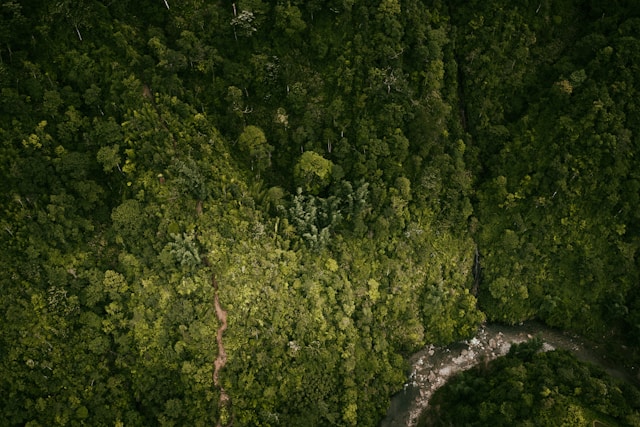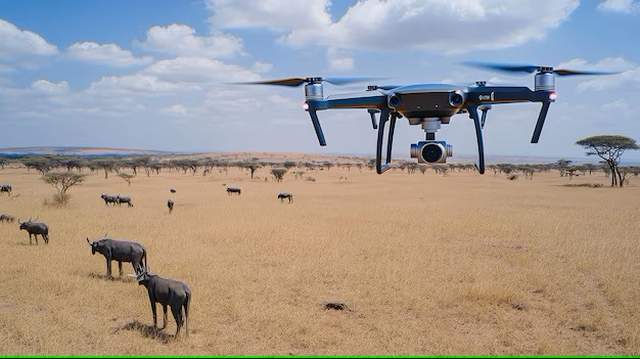The Silent Revolution: How Robotics is Becoming Nature’s New Ally
Ever found yourself standing in a forest or just staring out at the ocean, totally amazed by how wild and complicated nature can be? Honestly, it’s kind of mind-blowing. For ages, we’ve relied on good old human curiosity (and sometimes sheer stubbornness) to try to understand and protect this world. But let’s be real: it hasn’t always been easy. Researchers and conservationists have had to deal with endless stretches of wilderness, sneaky animals that don’t want to be found, tight budgets, and some pretty dangerous conditions.

But here’s the exciting part—what if technology could step in to help? Like, what if we had robotic arms, sensors, or even “eyes” in the sky lending a hand? Well, guess what? That’s not sci-fi anymore. Robotics is quietly revolutionizing how we study and protect nature. It’s becoming a must-have toolkit for scientists everywhere. So let’s dig into how robotics tools for wildlife monitoring and conservation are changing the game—and why this matters so much for the future of our planet.
Breaking Down Old Barriers: Why Do We Need Robots Anyway?
Let’s face it: studying wildlife used to be a slog. Picture yourself trying to track a snow leopard across some freezing mountain range or counting every single fish on a gigantic coral reef. Yeah, not exactly a walk in the park! There were some big problems:
- Getting There: Reaching places like thick jungles, deep oceans, or super high mountains isn’t exactly easy (or cheap).
- Disturbing Wildlife: Sometimes just showing up makes animals act weird, which messes with the research.
- Spotty Data: Getting good data all the time was tough—too many gaps or missed moments.
- Safety Risks: Let’s not forget about rough weather, tricky terrain, and oh yeah—sometimes angry animals.

Now here comes environmental robotics technology to shake things up. These robots can go where people just can’t (or shouldn’t), work around the clock without getting tired or bored, collect way more data than humans ever could—and they’re usually less disruptive too. This is basically how robotic technology is revolutionizing wildlife research: instead of catching just quick glimpses of animal life, we get ongoing stories and deeper insights. The benefits of robotics in ecological field research are clearer than ever—making life easier for scientists and giving us all a better shot at protecting nature.
Meet the Robotic Dream Team: Cool Innovations in Action
1. Eyes Up High: Drones
You’ve probably seen drones buzzing around—they’re hard to miss! These unmanned aerial vehicles (UAVs) are basically flying toolkits packed with high-res cameras, thermal sensors, GPS trackers—the works. When it comes to autonomous drones for tracking endangered species, these gadgets have been game-changers.
- They can survey massive areas way faster than anyone trekking on foot.
- Want to check on orangutan nests up in Borneo? Or quietly follow animal herds without scaring them? Drones do that.
- With thermal imaging onboard, they spot nocturnal animals—or even poachers hiding at night—giving rangers real-time updates.
- They map habitats from above and monitor deforestation or ecosystem health with ease.

2. Unseen Helpers: Ground & Underwater Sensors
Not all robots need wings! Some keep watch quietly on land or underwater. These include all kinds of robotic sensors used in animal behavior studies:
- Super-smart camera traps snap photos day or night when they sense movement or sound; with built-in AI, they can even ID animals right away.
- Stationary sensors measure stuff like temperature, humidity, water quality—you name it—helping researchers see what’s happening in real time.
- And then you’ve got mobile robots disguised as animals (think robotic penguins!) that sneak into colonies for close-up observations without causing a fuss.
3. Exploring the Deep Blue: Marine Robotics
The ocean is another story altogether—it’s mysterious and tough to explore. That’s where advanced robotic systems for marine wildlife observation come into play.
- Remotely Operated Vehicles (ROVs) let scientists poke around deep-sea habitats safely from ships above.
- Autonomous Underwater Vehicles (AUVs) roam on their own for days or weeks at a time, mapping reefs or tracking tagged sea creatures.
- These underwater bots are crucial for checking coral reef health or monitoring bleaching events before it’s too late.

4. Brains Behind the Bots: AI-Powered Systems
So you’ve got tons of data—now what? Enter Artificial Intelligence! With AI-powered robots in wildlife population surveys, software can sort through thousands of images or hours of audio super quickly—and often more accurately than any person could.
- AI spots which species are present (even counting individuals), recognizes animal calls, and flags odd sounds like gunshots near protected areas.
- Combining robotics with AI means researchers get clear answers faster—a huge boost for conservation efforts.
Conservation Gets an Upgrade
All these cool gadgets aren’t just flashy toys—they’re making real-world conservation so much more effective:
- More Data Than Ever: Thanks to robot-assisted data collection in conservation projects, we’re seeing way richer pictures of ecosystems than before.
- Better Monitoring: With robotic wildlife tracking giving us real-time info on animal movements and habitat use, we can react quickly when something goes wrong.
- Protecting Habitats: Drones spot illegal logging; ground sensors keep tabs on soil health; underwater robots reveal coral die-offs early—all helping managers intervene before damage gets worse.
- Fighting Poaching: Drones fitted with thermal cameras catch poachers at night; AI alerts rangers instantly so they can act fast.
Not Without Its Hiccups
Of course, nothing’s perfect—even robots have their issues:
- Price Tag: Some of these systems cost a pretty penny upfront.
- Learning Curve: You’ll need folks who actually know how to run them—and make sense of all that data!
- Wildlife Disturbance: If you’re not careful with noisy drones or clunky ground robots, you might stress out sensitive critters.
- Data Overload: All those sensors mean mountains of information—so you’d better have solid storage and processing setups.
- Tough Environments: Rainforests and oceans aren’t exactly gentle; robots need to be rugged enough to handle whatever Mother Nature throws at them.
Luckily engineers are working hard on quieter drones, tougher bots that blend right in (bio-mimicry is huge!), longer battery lives—you name it.
What’s Next?
Honestly? We’re just getting started with this whole “robots meet nature” thing! Here’s what could be coming soon:
- Tiny bio-inspired bots buzzing around like insects or swimming like fish
- Swarms of small robots teaming up to cover huge areas together
- Smarter AI that gives instant feedback while bots are still out collecting data
- Longer-lasting batteries and sharper sensors
- Lower costs so even small organizations can join in

Imagine little robo-beetles checking plant health leaf by leaf—or fleets of autonomous boats patrolling oceans non-stop!
Humans + Robots = A Powerful Team
Here’s what really matters: robots aren’t replacing scientists—they’re making us better at what we do. Think of them as extra eyes and ears that never get tired (or cranky). By combining human passion with robotic precision—from drones soaring over rainforests to silent sensors hidden under leaves—we’re finally able to understand and protect Earth’s wild places like never before.
So as robot-assisted environmental research keeps advancing, there’s real hope we’ll figure out new ways to safeguard our natural world for generations ahead. This partnership between humans and machines marks an exciting new chapter—a future full of discovery and promise.
What do you think about using robots to help save wildlife? Cool idea—or maybe something you still have questions about? Let me know!
